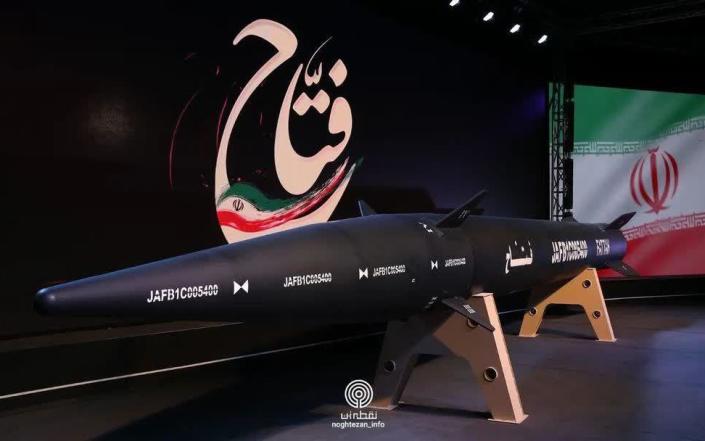
Iran has unveiled what it claims is the regime’s first hypersonic missile, dubbed the “Fattah”, in a potentially major challenge to Israel and Western leaders.
On Tuesday, Iran’s Revolutionary Guard Corps unveiled the new weapon, which can travel at five times the speed of sound, in a ceremony attended by President Ebrahim Raisi and the regime’s top military leaders.
Iran says the missile can both circumvent and destroy air defense systems, creating a significant security headache for Israel, Iran’s sworn enemy in the region.
It will also raise serious concerns among Western leaders, who are increasingly wary of Iran’s growing military capabilities, particularly its new security pact with Russia that is aiding the invasion of Ukraine.
The missile “can bypass the anti-ballistic systems of the United States”
An Iranian state television report on the ceremony claimed that the missile can destroy “the enemy’s advanced anti-missile systems and constitutes a great generational leap in the field of missiles”.
“It can circumvent the most advanced anti-ballistic missile systems of the United States and the Zionist regime, including Israel’s Iron Dome,” the report added.
The Fattah system has a range of 1,400 km, can move in and out of space and, according to an Iranian general, is capable of hitting targets in Israel in as little as 400 seconds.
Israel and Iran are locked in an escalating shadow war in which they have attacked each other’s ships, as well as other key infrastructure. Israel is also suspected of having launched a series of covert attacks against Tehran’s nuclear program, which it considers an existential threat.

Benjamin Netanyahu, Israel’s prime minister, has repeatedly suggested he might take decisive military action against the nuclear program in the near future, a move that could escalate into open regional warfare.
This comes after Iran announced it had completed work on the hypersonic missile, which some Israeli media said could have been done with technological support from Russia.
Since Russia invaded Ukraine, Iran has supplied Vladimir Putin’s forces with hundreds, if not thousands, of drones and missiles. In return, Moscow must send powerful fighter jets to Tehran and could help the regime develop other areas of its military prowess.
Broaden your horizons with award-winning British journalism. Try The Telegraph free for 1 month, then get a year for just $9 with our exclusive US offer.

